Update [01.13.2020] -- Using Qt To Measure V0 Systematic
One thing we've been trying to figure out is how to go about assessing the systematic due to feed-down from secondary vertices. Some of our investigations taken along this front can be found here:
https://drupal.star.bnl.gov/STAR/blog/dmawxc/update-12192019-understanding-turning-decays-vs-run-9-dijet-embedding-sample
https://drupal.star.bnl.gov/STAR/blog/dmawxc/update-12192019-tracking-efficiencies-decays-vs-run-9-dijet-embedding-sample
https://drupal.star.bnl.gov/STAR/blog/dmawxc/update-12292019-event-pt-run-9-pp-data-and-embedding
https://drupal.star.bnl.gov/STAR/blog/dmawxc/update-01022020-track-pt-run-9-pp-data-and-embedding
https://drupal.star.bnl.gov/STAR/blog/dmawxc/update-01092020-unfolding-run-9-pp-data-using-response-matrices-made-different-dca-cuts
However, one way we could easily go about this is by varying what we call 'qT'. When making our response matrices, I apply a cut on the fraction of energy carried by the matched reconstructed jet relative to its generated counterpart. In other words:
qT = pTjet(matched) / pTjet(mc)
Typically, I require 'qT' to be between 0.15 and 1.85 (this choice is relatively arbitrary; the lower cut was chosen to match the hadron-jet analysis, and the upper cut was chosen to be symmetric with the lower cut). This distribution looks like so:
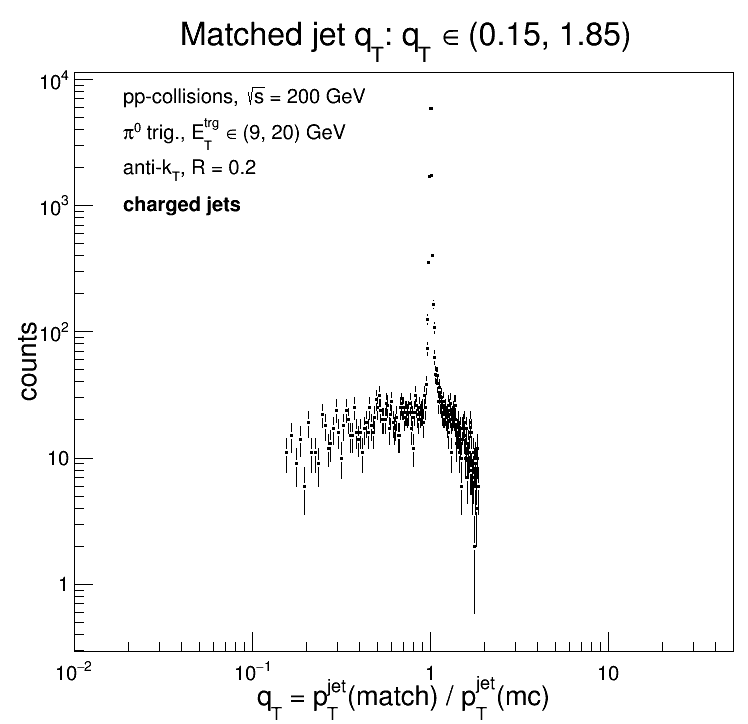
And if I switch off the upper limit, this distribution now looks like:
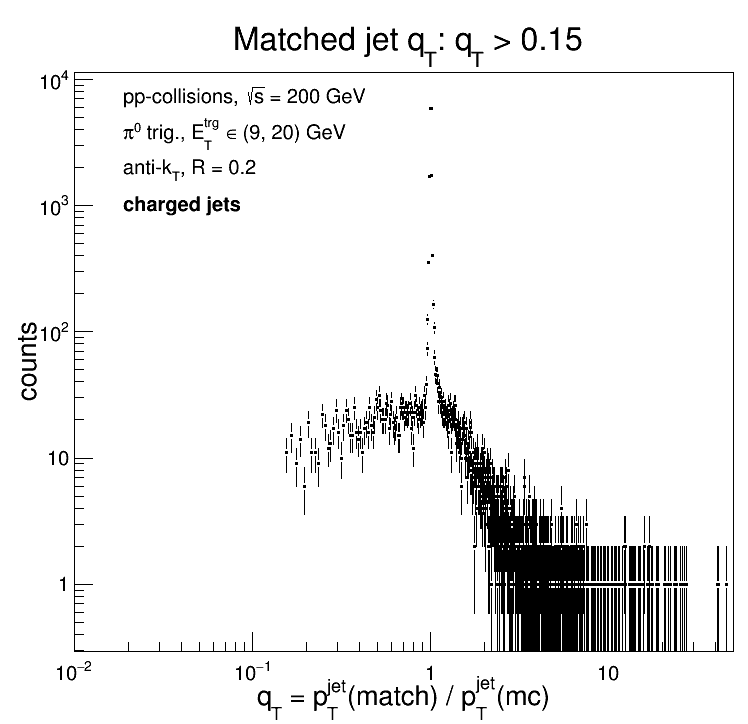
Our anticipation is that we can get an idea of the secondary vertex systematic by adjusting the upper limit on this 'qT' cut. The secondaries will distort the reconstructed jet 'pT', tending to push it upwards relative to its particle-level counterpart. So how does this impact the response matrix and the jet-matching efficiency?
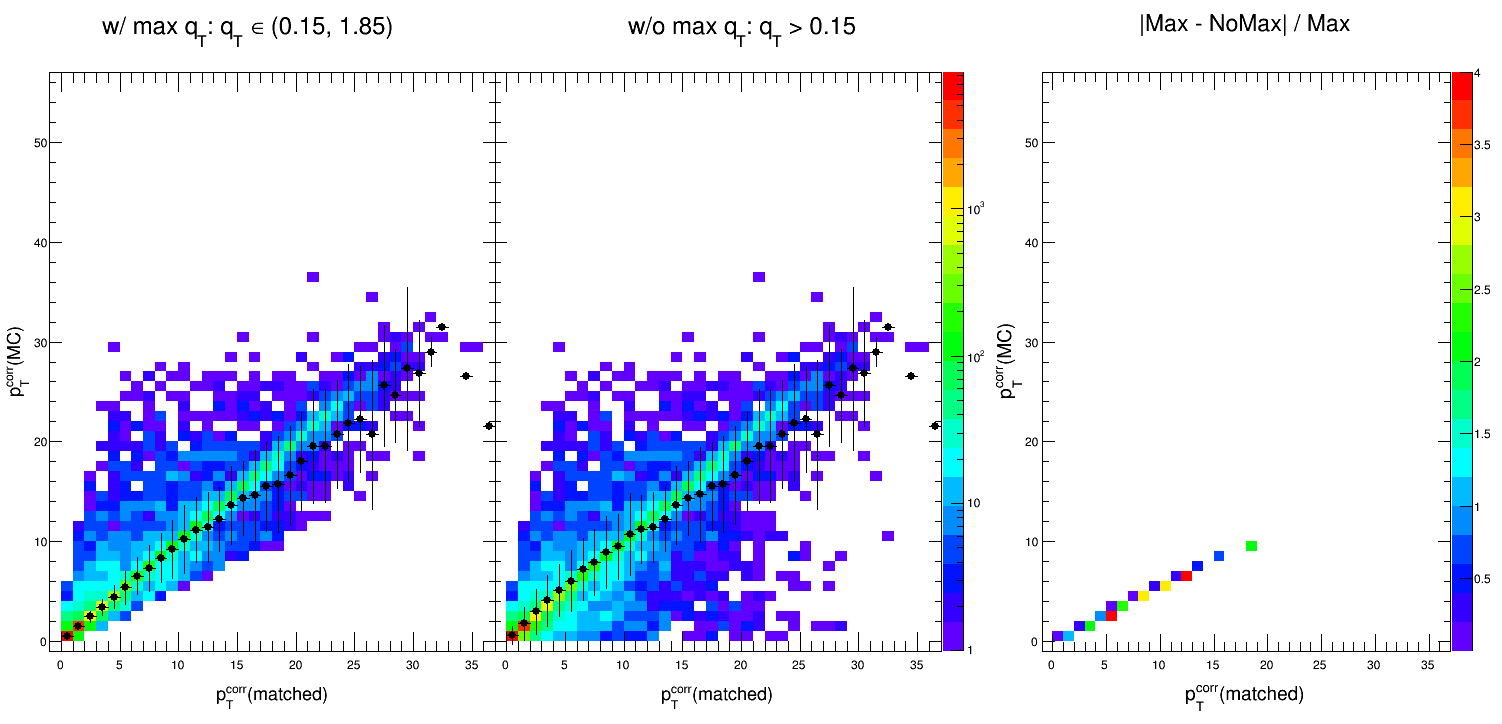
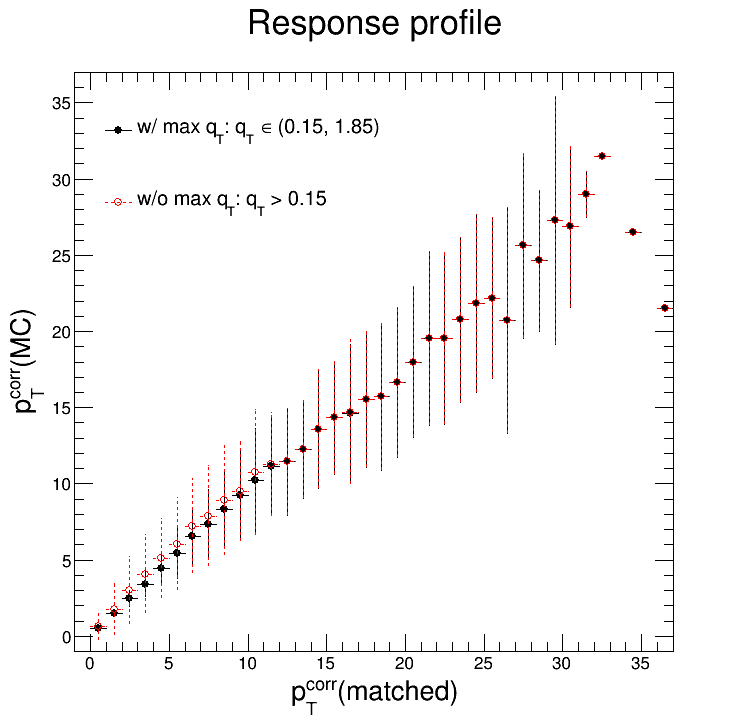
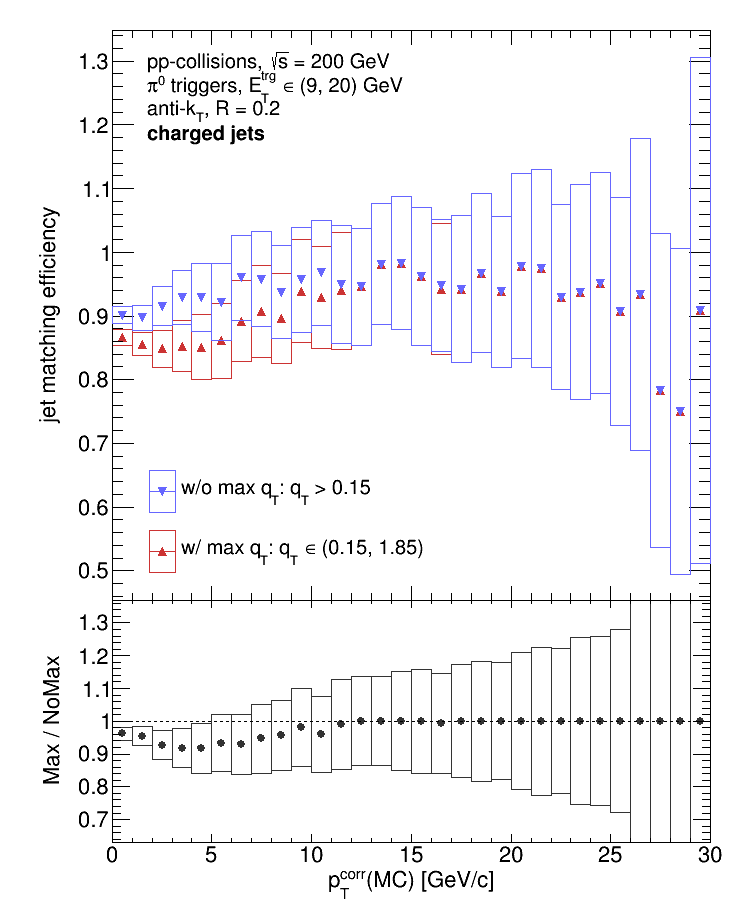
Looks like it has its biggest effect at small 'pTjet' (which is to be expected). Note that the response matrices shown are not normalized. Also note that these were made using only one bin of the embedding: 'pTparton = (25, 35)' GeV/c, RFF configuration. For the sake of posterity, I've attached a screenshot of the bit of code in the jet-matching script where we apply the 'qT' cut.
- dmawxc's blog
- Login or register to post comments
